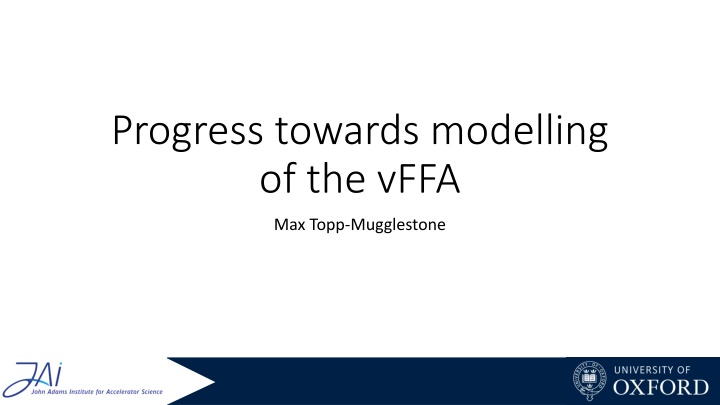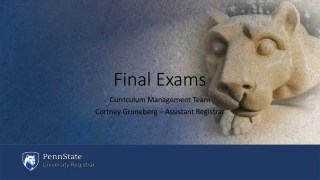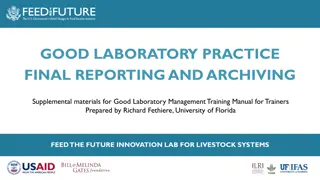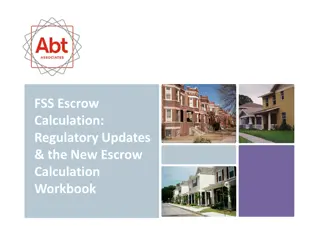
Progress Towards Modeling of vFFA by Max Topp-Mugglestone
Learn about the progress in modeling the variable-field focusing accelerator (vFFA) through various Hamiltonians, closed orbits, optical components, and harmonic analysis. Understand the challenges and advantages of vFFA concept, as discussed by Max Topp-Mugglestone. Explore the fundamental Hamiltonian, practical considerations, and the need to adapt models for complex designs like FETS-vFFA and ISIS-II.
Download Presentation

Please find below an Image/Link to download the presentation.
The content on the website is provided AS IS for your information and personal use only. It may not be sold, licensed, or shared on other websites without obtaining consent from the author. If you encounter any issues during the download, it is possible that the publisher has removed the file from their server.
You are allowed to download the files provided on this website for personal or commercial use, subject to the condition that they are used lawfully. All files are the property of their respective owners.
The content on the website is provided AS IS for your information and personal use only. It may not be sold, licensed, or shared on other websites without obtaining consent from the author.
E N D
Presentation Transcript
Progress towards modelling of the vFFA Max Topp-Mugglestone
Contents Intro to the vFFA Hamiltonians Closed orbits Optical components & Harmonic Analysis Overview Numerical study Next steps Max Topp-Mugglestone 2
Successive higher energy orbits are stacked vertically Constant tune achieved by condition ? ? = ?0?? Advantages Strong focussing Near-isochronous But vFFA Concept Magnetic fields from scaling law imply complicated optics Max Topp-Mugglestone 3
Approaching the vFFA For hFFA, we have the following Hamiltonian: +??2 ~??2 +?2 +?2 1 ? ?2 ? ?2 2 2 2 2 Is there an equivalent for the vFFA? (Question asked by Thomas at the FFA school) Max Topp-Mugglestone 4
The Fundamental vFFA Hamiltonian +??2 ~??2 +?2 ?+ ??? 2 2 ? Very simple and neat, but Only applicable on the midplane Does not include fringe fields The closed orbit for a vFFA cannot exist on the midplane* Fringe fields dominate magnets in FETS-vFFA and ISIS-II designs Max Topp-Mugglestone 5
A Word on vFFA closed orbits y hFFA: Plane of curvature coplanar with magnet midplane vFFA: Plane of curvature perpendicular to magnet midplane Orbit cannot be confined to magnet midplane* Orbits are non-planar! Our vFFA Hamiltonian needs to reflect these properties! ? ?? ? *This may not be the case for certain sector vFFAs Max Topp-Mugglestone 6
A practical vFFA Hamiltonian +??2 ~??2 1 ?2?0 +?2 ?3? +?2?0 +?2 ?3? ?2?0 +?4?03 2?3? ? ?3? cos??0 ?3? sin??0 ?3? + ?? 2 2 2 2 2 We can use this Hamiltonian to analytically describe a vFFA if: We can parametrize the cell geometry in 3d and determine: ?0 horizontal offset from magnet midplane ?3? Radius of curvature for a 3-dimensional bend The magnets are long in comparison to the fringe The radius of curvature is large However, FETS-vFFA and ISIS-II designs do not meet these criteria So why doesn t the model work? How must it be adapted? Max Topp-Mugglestone 7
Test Lattice parameters M-value 4.0/m Magnet length 0.5m FD ratio 2 FETS-like FDF Triplet Highly nonplanar closed orbit fringe-dominated magnets Following results use a modified cell with zero bending angle F-D offset 0.02m Cell length 2.8m Max Topp-Mugglestone 8
Method of Harmonic Analysis Scan along closed orbit Draw a circle at each point on orbit in a plane perpendicular to the tangent vector Evaluate radial field component (? ?) on a number of points around the circle Take Fourier transform of radial field around the circle Obtain multipole coefficients for each integration step Reconstruct optics using multipole kicks (thin lens transfer matrices) corresponding to the measured coefficient Max Topp-Mugglestone 9
Quadrupole components Field focusses in one transverse direction, defocusses in the other Quadrupole-only tune Full Numerical Tune (FIXFIELD) 0.247 0.182 0.137 0.124 qu qv Max Topp-Mugglestone 10
Dipole components Geometric focussing effect perpendicular to dipole field (aka weak focussing) Quad+dipole tune Full Numerical Tune (FIXFIELD) 0.247 0.182 0.229 0.129 qu qv Max Topp-Mugglestone 11
Longitudinal field components Fields collinear with orbit Induce a rotation of the transverse optical planes around the closed orbit Larmor rotation ? = ??? 2? ?? Quad+dipole+longitudinal tune 0.211 0.154 Full Numerical Tune (FIXFIELD) 0.247 0.182 qu qv Max Topp-Mugglestone 12
Radial field components Imparts angular momentum to the beam Quad+dipole+longitudinal +radial tune 0.247 0.182 Full Numerical Tune (FIXFIELD) 0.247 0.182 qu qv Max Topp-Mugglestone 13
To demonstrate robustness of method across parameter space: Max Topp-Mugglestone 14
Q+D+L+R Q+D+R Q+D+L Q+L+R D+L+R Q+D Q+R D+R Q+L D+L S+R Q D L R 0.137 0.124 0.173 0.026 0.000 0.000 0.006 0.006 0.229 0.129 0.095 0.156 0.079 0.079 0.172 0.018 0.137 0.000 0.102 0.102 0.211 0.154 0.196 0.079 0.141 0.192 0.203 0.247 0.104 0.182 qu qv All field elements critical to reconstructing accurate tune in both planes Can we quantify the importance of each element? Can we explore how this changes across the parameter space? Max Topp-Mugglestone 15
Multipole Element Significance Study Measure multipoles and construct optics as in Harmonic Analysis scheme outlined earlier Take optical model and adjust strength of individual multipole by given amount E.g. rerun kick-drift integration with quadrupole strength tweaked by 10% Measure change in u and v tune and normalise ( ?? Record data across the parameter space ??) Rough way of quantifying importance of each field element Max Topp-Mugglestone 16
Multipole Element Significance Study Evolution of harmonic analysis for straight triplet vFFA across upper stability region FETS-vFFA operates in lower stability region Max Topp-Mugglestone 17
Harmonic analysis of FETS baseline FETS baseline parameter scan Lower stability region Agreement isn t quite as good as the previous results Max Topp-Mugglestone 18
Preliminary results from FETS baseline Dominated by longitudinal fields Radial fields have similar order of effect to quadrupole Dqu appears to decrease with increasing longitudinal field! Interesting effect of Larmor angle? Max Topp-Mugglestone 19
Lattice dominated by longitudinal fields at low m This dq/q metric is limited: Useful for comparing regions of parameter space Could be used to classify regimes of behaviour for a machine Doesn t give the full picture of how the optics behave Max Topp-Mugglestone 20
Effect of dipole and quadrupole focussing well-understood Effect of longitudinal field can be expressed in terms of Larmor rotation How do we understand the influence of the radial field? Further exploration of vFFA parameter space needed Can we define fringe-dominated and magnet-dominated regimes? Can we design a planar vFFA? What is the influence of longitudinal and radial fields in this case? Max Topp-Mugglestone 21
Apply harmonic study generally in FFA machines (hFFA etc) Further coupling study in vFFA Use results of vFFA study to inform further modelling from an analytic perspective Possible future study of harmonic elements on other properties of the accelerator E.g. dynamic aperture Max Topp-Mugglestone 22


![READ⚡[PDF]✔ Yup I'm Dead...Now What? The Deluxe Edition: A Guide to My Life Info](/thumb/20463/read-pdf-yup-i-m-dead-now-what-the-deluxe-edition-a-guide-to-my-life-info.jpg)

















